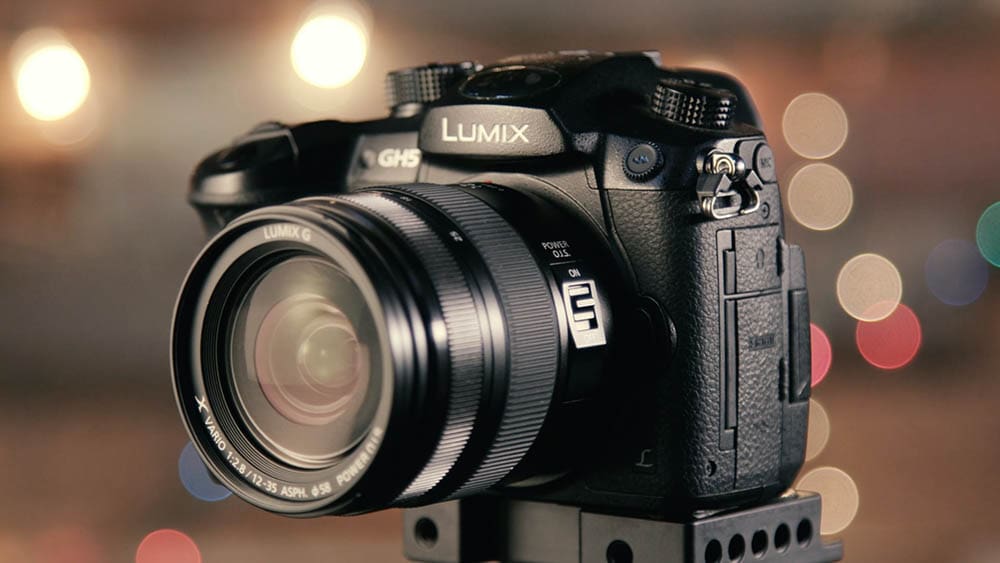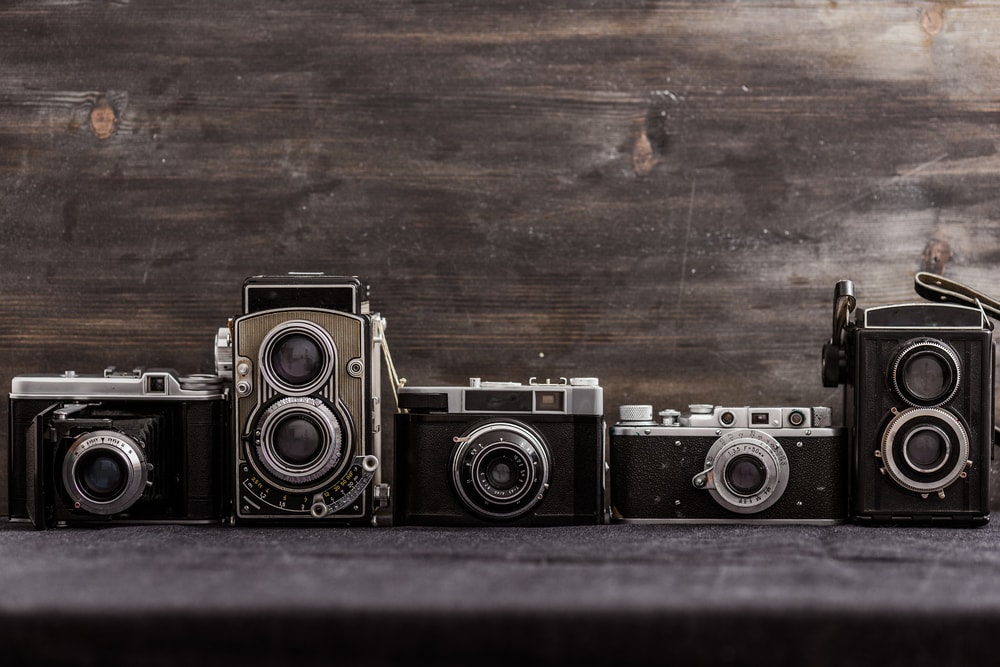When Were Cameras Invented? History of the Camera
Last Updated on

The first photographic camera was invented1 by Frenchman Joseph Nicéphore Niépce in 1816. However, the history of the camera begins way before this. Something called “camera obscura” was frequently used between the 11th and 17th centuries, and it is the base form of the camera.
In other words, the camera has a long and confusing history. Keep reading to learn how the camera obscura became the itty-bitty camera located in your back pocket.

Camera Obscura (11th – 17th Centuries)
Beginning in the 11th century, the camera obscura was used to project an image onto a wall. Camera obscura utilizes the natural optical phenomenon that occurs whenever an image is projected through a small hole and inverted on the opposite opening.
This principle is believed to have been used back by the Han Chinese philosopher Mozi, who was alive between 470 BCE and 391 BCE. By the 11th century, Arab physicist Ibn al-Haytham took this idea and wrote extensively about it.
Initially, camera obscura took place in stationary rooms. As time progressed, it could be transported. By the 17th century, portable camera obscuras were devised from tents and boxes. These items were typically used as drawing aids.
Camera obscura is notably different from photographic cameras because the image would not be captured. Instead, a scene could be reflected, but it would not be permanently there. If you changed the position of the scene or turned on the light, you wouldn’t be able to see the image anymore.

Early Photographic Cameras (18th–19th Centuries)
By the 18th and 19th centuries, scientists began to move from the camera obscura to early versions of the photographic camera. Scientists from around the globe were experimenting with how certain substances, such as salt, became darkened whenever they were exposed to sunlight. Scientists eventually began trying to create images using this knowledge.
The first permanent photograph that came about was produced by Joseph Nicéphore Niépce. He essentially wanted to expose an image on pewter coating, thus creating a very early form of a photographic camera. From there, photographic cameras exploded very quickly. As more people learned of this knowledge, more versions of the camera developed.
The Invention of Photographic Film
Eventually, people became bored with the standard photographic camera. As a result, George Eastman began pioneering photographic films. Photographic film is what eventually led to the creation of movie cameras and video cameras.
Initially, photographic film was in a box camera. The box had to have enough film that many exposures happened at a time. The vast majority of photographic films were expensive and only used by those who had a lot of money.

Modern Camera Developments (20th–21st Centuries)
Ever since the 1900s, the modern camera began to develop at rapid rates. Here is a look at the most important developments that have happened in the camera since the early 1900s:
35 mm Film
You might not know it, but 35 mm film is an important stopping point in the history of the camera. Many manufacturers begin using this film between 1905 and 1913. In fact, this film is largely to blame for the explosion in cameras that happened in the early 20th century. Major brands, such as Kodak and Canon, came about during this time.
Instant Cameras
By 1948, cameras had developed so much that you could capture a picture instantly. Today, instant cameras are mainly known by the name Polaroid. Polaroid cameras were originally developed in 1948, but they became massively popular in the 1960s.

Digital Cameras
Digital cameras have come to overpower the instant camera in just a short period of time. True digital cameras began developing in the 1980s, but they didn’t truly boom until the 1990s. Ever since 2003, digital cameras have almost always outsold film cameras for their convenience.
Phone Camera
As you might imagine, the most popular camera today is the phone camera or the camera phone. The first camera phone was released in 1999. Today, practically all smartphones have high-resolution digital cameras, so you can take high-quality pictures with just a quick snap.
Final Thoughts
Even though the first photographic camera was not developed until 1816, the history of the camera predates the photographic camera by many years. Through camera obscura, images could be replicated on a screen, but these images were not permanent.
The idea of a permanent picture did not come about until the 1800s. As soon as the first photographic camera was developed, scientists continued to roll out new designs one after the other. From photographic film to instant cameras, the history of the camera has been ongoing for the last 100 years. Today, digital cameras and phone cameras are the most popular.
It will be interesting to see where the history of photography goes. Because cameras have been developing so rapidly within the last 30 years, we can only imagine what cameras will look like within the next 30 years.
See also:
- What Do Red Light Cameras Look Like?
- What Is HDR in a Camera?
- What Is A Bridge Camera?
- How Much Does a Polaroid Camera Cost
Featured Image Credit: hareGrid, Unsplash
About the Author Robert Sparks
Robert’s obsession with all things optical started early in life, when his optician father would bring home prototypes for Robert to play with. Nowadays, Robert is dedicated to helping others find the right optics for their needs. His hobbies include astronomy, astrophysics, and model building. Originally from Newark, NJ, he resides in Santa Fe, New Mexico, where the nighttime skies are filled with glittering stars.
Related Articles:
When Were Binoculars Invented? History, Today & Future
How to Clean a Refractor Telescope: Step-by-Step Guide
How to Clean a Telescope Eyepiece: Step-by-Step Guide
How to Clean a Rifle Scope: 8 Expert Tips
Monocular vs Telescope: Differences Explained (With Pictures)
What Is a Monocular Used For? 8 Common Functions
How to Clean a Telescope Mirror: 8 Expert Tips
Brightfield vs Phase Contrast Microscopy: The Differences Explained
